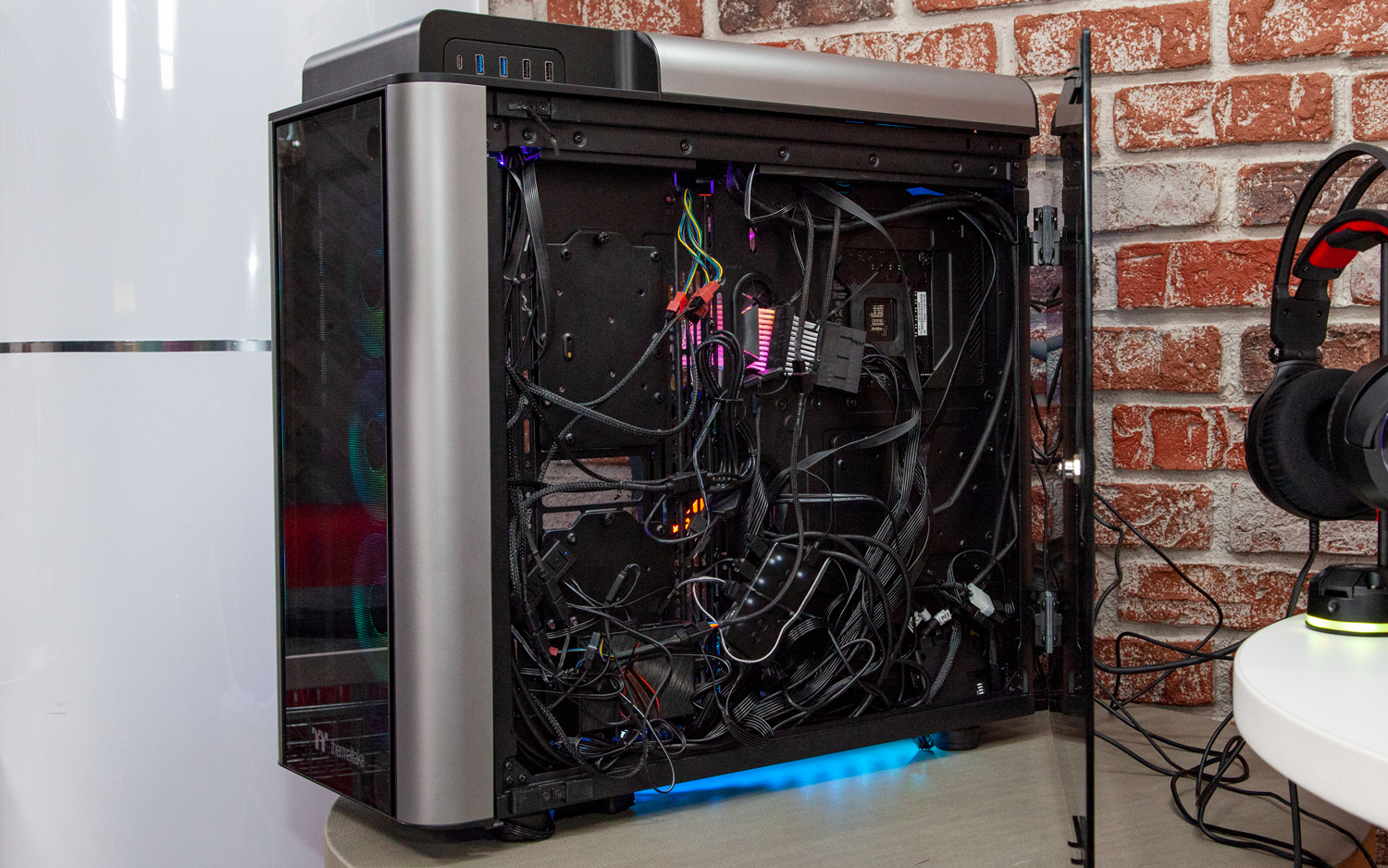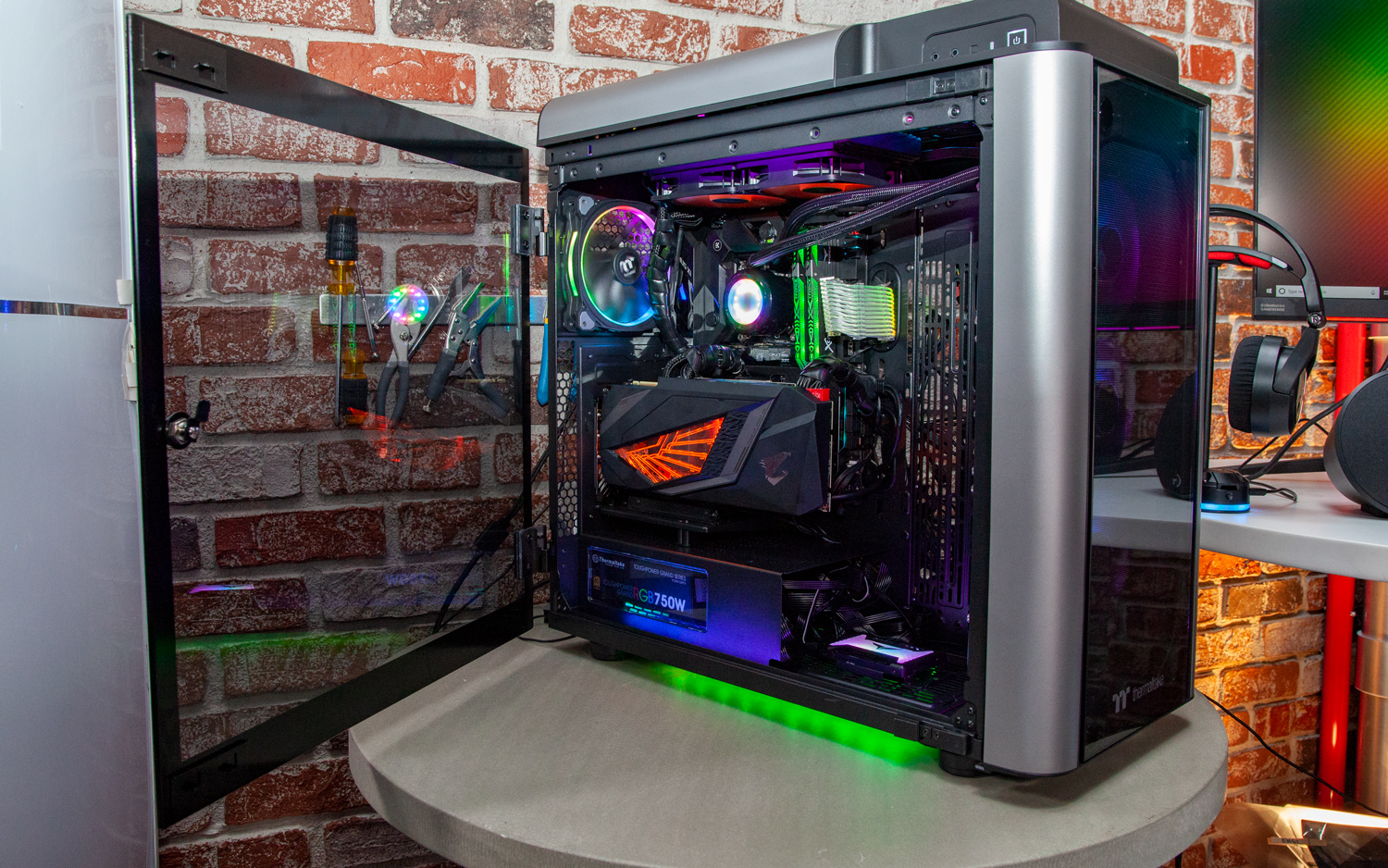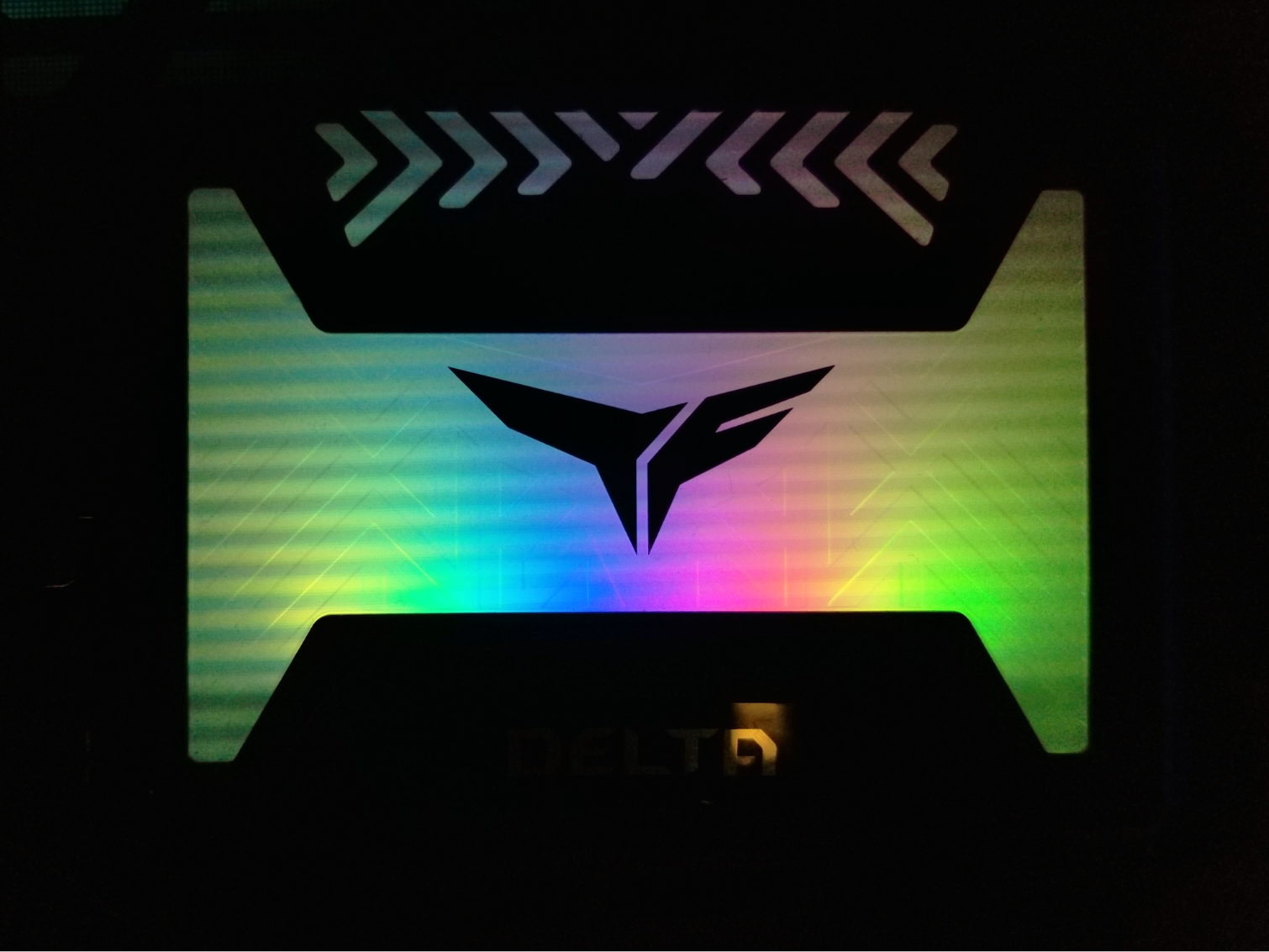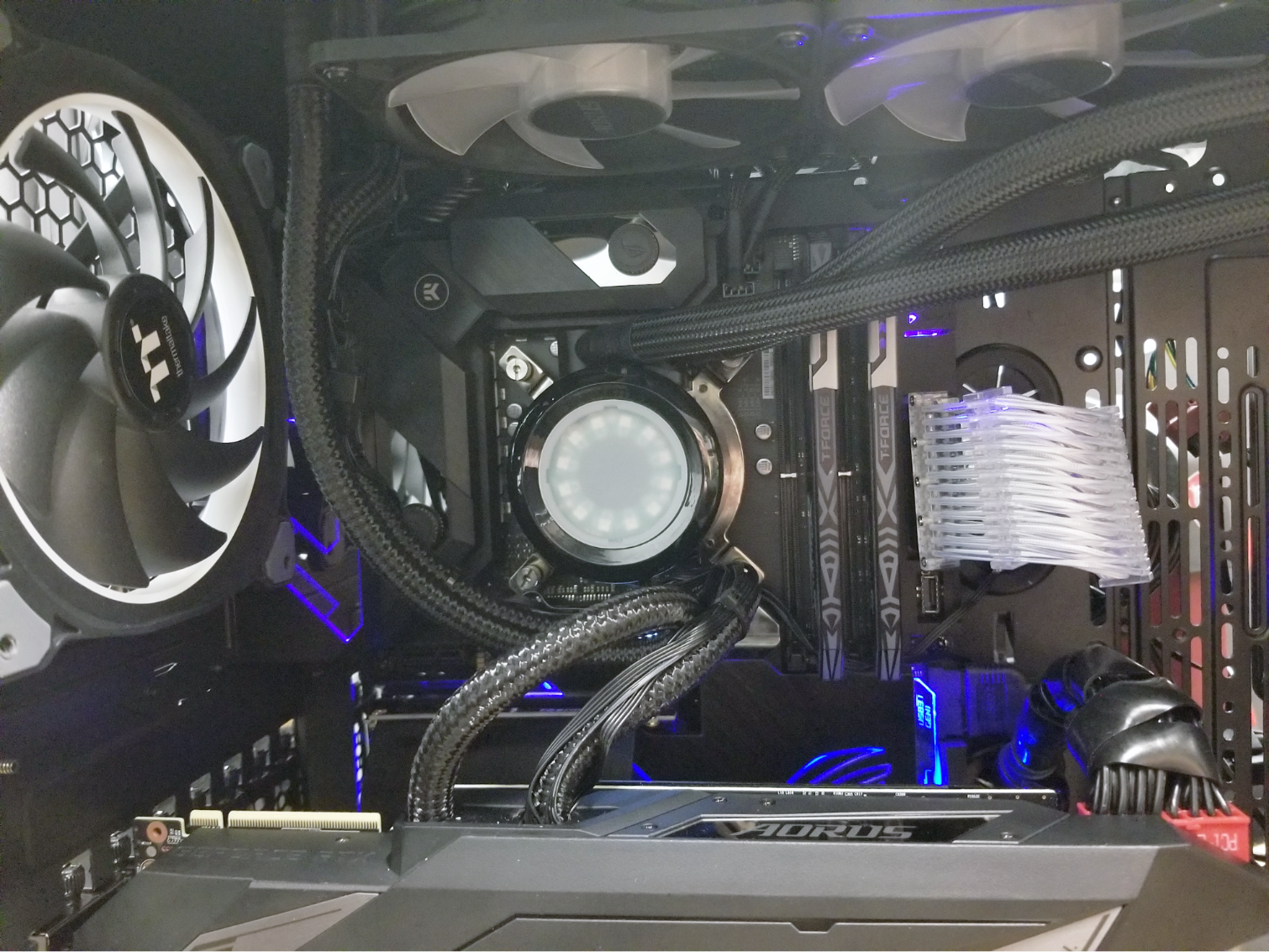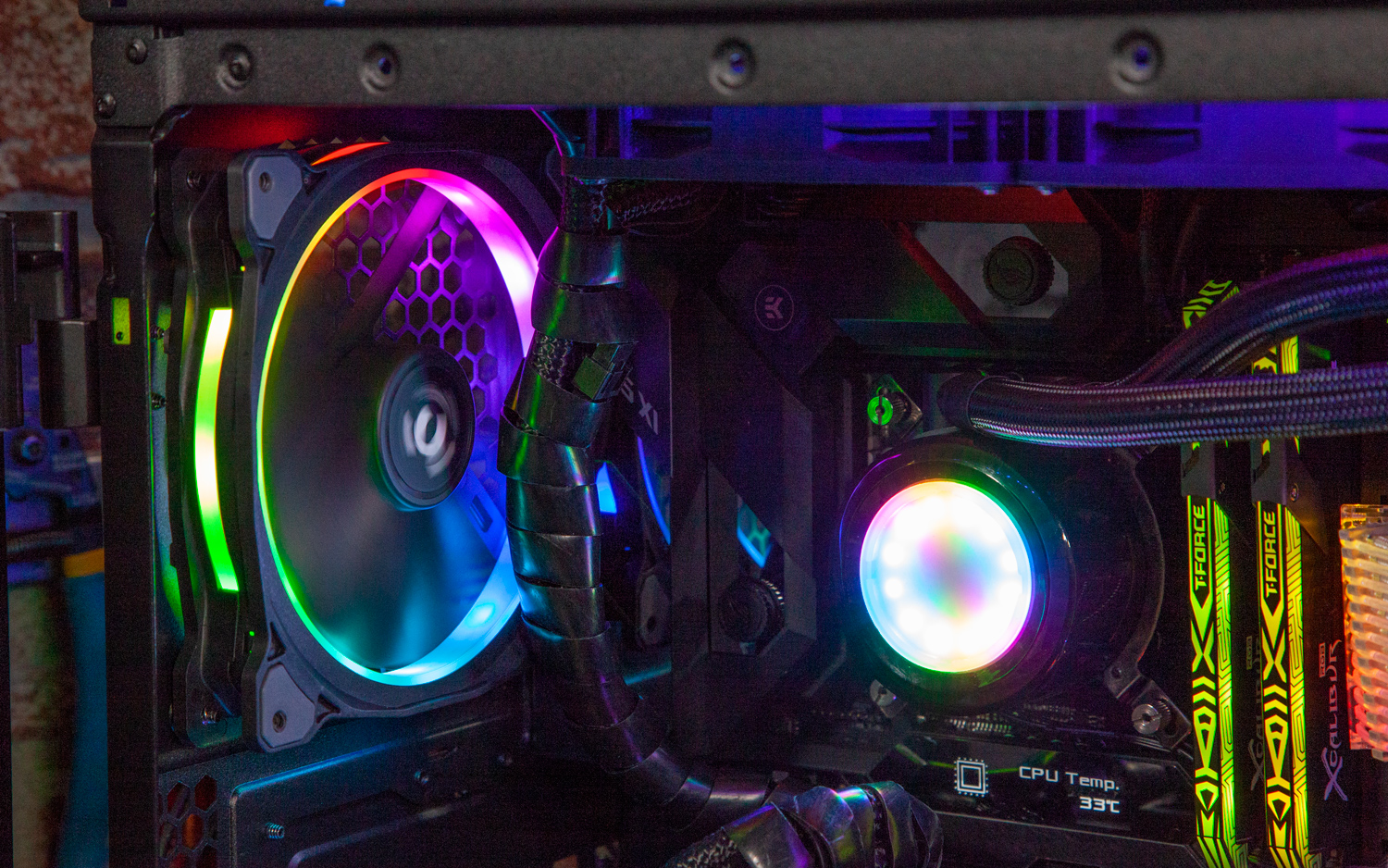The RGBeast PC: What We Learned Building an RGB Battlestation
What We Learned
Cable Cleanliness: Yeah, Good Luck With That
Around back, things were an impossible mess of cabling. We could have spent several hours attempting to make things a bit cleaner back here. But really, with all these wires and controller boxes, there was no way the back side of the motherboard was going to look pretty. At least the Level 20 GT case has lots of room for cabling and controllers. Anything less and we’d never be able to close the tempered-glass door.
And so long as there’s a wall or a desk to push the right side of the case up against, our final build looks reasonably clean.
You can also see in the above photo that our Team Group T-Force Delta RGB SSD eventually landed in the bottom of our case, near the front. This isn’t an official drive-mounting space designated in the case manual. But the metal mesh on the bottom did a decent job of anchoring the drive sled.
And we like placing the drive and its impressive “water flow” lighting effects in an otherwise unlit spot in the case, giving the drive a chance to really stand out. It’s seriously one of the nicest effects we’ve seen on any RGB component, period.
What We Learned
Our main complaints about this build revolve around the confusing collection of incompatible RGB parts and ecosystems, which we knew going in were going to be problematic. There’s also no way you’re going to find a motherboard for a build like this that has enough RGB and USB 2.0 headers. Be sure to leave some room in your budget for extension cables and adapters.
Our other major issue revolved around hoses--both our graphics card radiator and our closed-loop CPU cooler. The later was nearly too short to reach the front of our large case.
And worse, the tubes for the graphics card have ugly wires and extension connectors wrapped around them. We tried to clean this up a bit with some standard polyethylene cable wrap.
Get Tom's Hardware's best news and in-depth reviews, straight to your inbox.
But the result was nearly as unattractive as the cables and tubes it was designed to hide. We’d like to see Aorus better integrate the cooling tubes and fan wiring into a more seamless, attractive single-sleeve cable in future models.
Another issue on the Aorus card front: The lighting on the graphics card and cooling fans had a tendency to revert to orange during the process of rebooting and moving the system around. Firing up Gigabyte’s RGB fusion software fixed this issue with a few clicks. But this is a problem we’ve heard from other users as well, and it didn’t seem to happen with our other RGB components, which retained their lighting settings throughout our final build and testing process.
In the end, though, were we to start this build again (please don’t makes us do that), we would set our editorial instincts aside and only buy RGB parts designed to work with one lighting ecosystem. Because dealing with several controller boxes and software suites was a minor nightmare, both from a build and usability standpoint.
And one of the the key things we look for in an RGB product is the ability to turn off the lights with relative ease, for those times when you maybe want to watch a movie or play a stealth-based game without a rainbow of colors bleeding into your retinas. With this build, to switch off all the lights, you either have to open up several pieces of software and/or fish around inside and under the case to press buttons on various controller boxes, or just pull the power plug.
For those of you sick of all these RGB lights, stick around for our next build where we’ll be focusing on basic black, and avoiding as many lights as is possible with components and peripherals these days. After this one, our eyes need a break.
MORE: Best Gaming Desktops
MORE: How To Build A PC
MORE: All PC Builds Content
After a rough start with the Mattel Aquarius as a child, Matt built his first PC in the late 1990s and ventured into mild PC modding in the early 2000s. He’s spent the last 15 years covering emerging technology for Smithsonian, Popular Science, and Consumer Reports, while testing components and PCs for Computer Shopper, PCMag and Digital Trends.
-
bennie101 DEEP DEEP Pockets this is for the 1% of people who afford such a build ...Follow the Rainbow and maybe the average Joe could build something close to this.Reply -
rvald005 daaaaannng...I do like seeing a nice rgb build every once in a while. I haven't built an rgb specific build yet...I was going to but the Lian Li dynamic is sold out everywhere, so I am opting for a simpler build with less lights...thinking NZXT h700 red/black box with white components and a few red rgb lights (making a red/black as the primary colors and white as an accent)...not sure if the white inside would look better with the black/white or all black case though...still thinking it over...Reply -
rabbit4me1 Common sense says it's more stuff than can go wrong and confuse you say save the moneyReply -
NinjaNerd56 Looking forward to the ‘stealth’ build.Reply
I don’t care for the lighting; I’m damned old, which means bifocals, which means some SUPER annoying ‘lens flares’ at times.
So other than a dim backlight...white or blue...on a keyboard so my old ass can reposition, I like gaming in the dark. -
Cheeno76 I hate being the grumpy old man, but I yearn for the day for this RBG fad to be over.Reply -
islandwalker @ANIMEMANIA, the components for the PC alone (not counting all the peripherals) tally up to very nearly $4500, although $1,000 of that is due to the current scarcity of the liquid-cooled RTX 2080 Ti. Its MSRP is $1349, but it's currently now often selling for above $2,000. :-(Reply -
Krazie_Ivan i don't mind RGB being an option avail for people (to each their own)... but it seems to me that this option, along with solid flat panels of glass, have somewhat taken-over the availability of more efficient designs. aesthetic design focus has left practicality & performance innovation stagnant, while increasing costs.Reply
i appreciate leaving the excessive garish Transformer cases behind for sleek & classy, but "Where's the Beef?!?" (*Wendy's - look it up) -
g-unit1111 RGB is like hot sauce - a little bit will bring out the subtle flavors, but too much and it will overpower the senses.Reply
